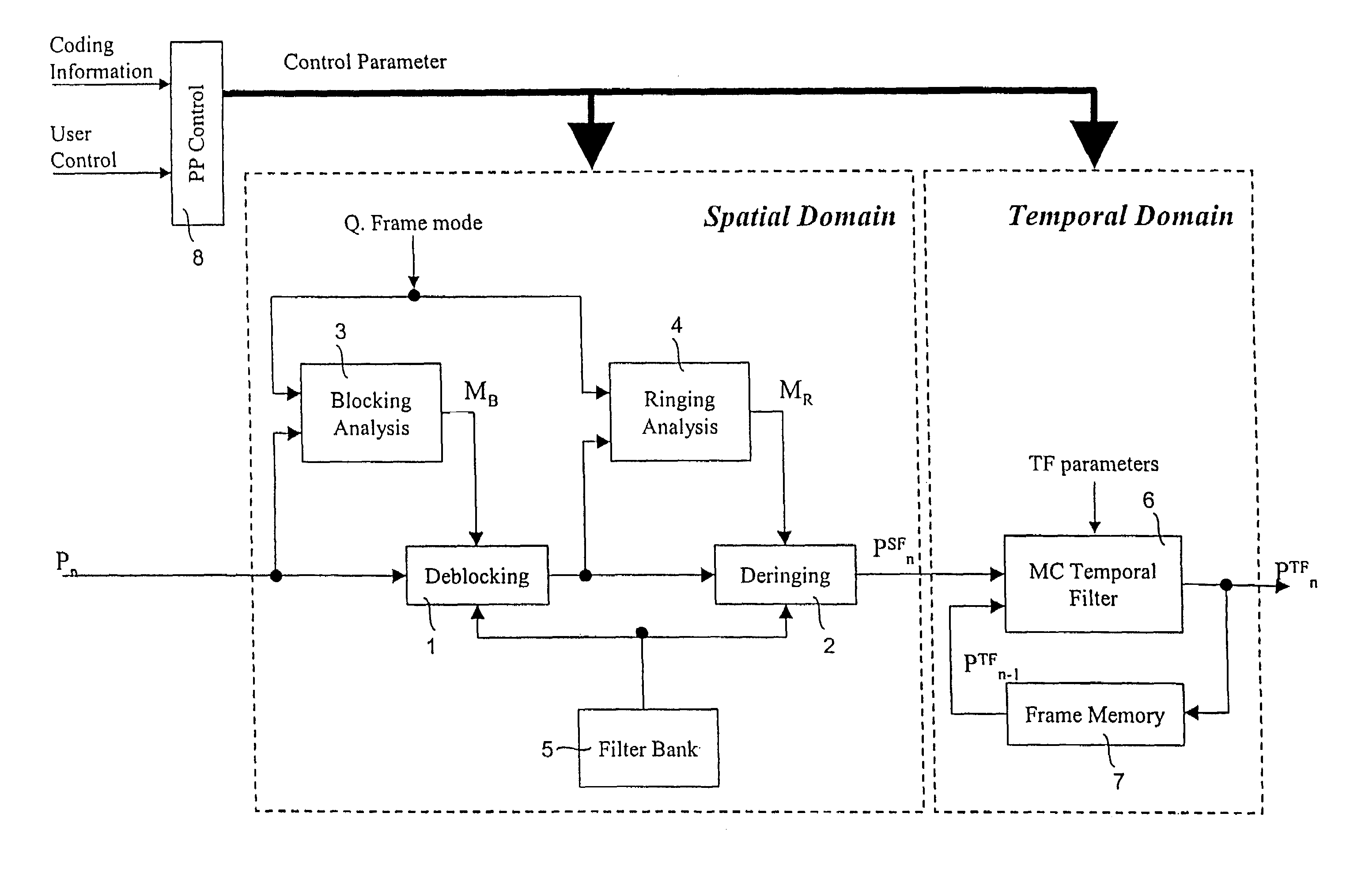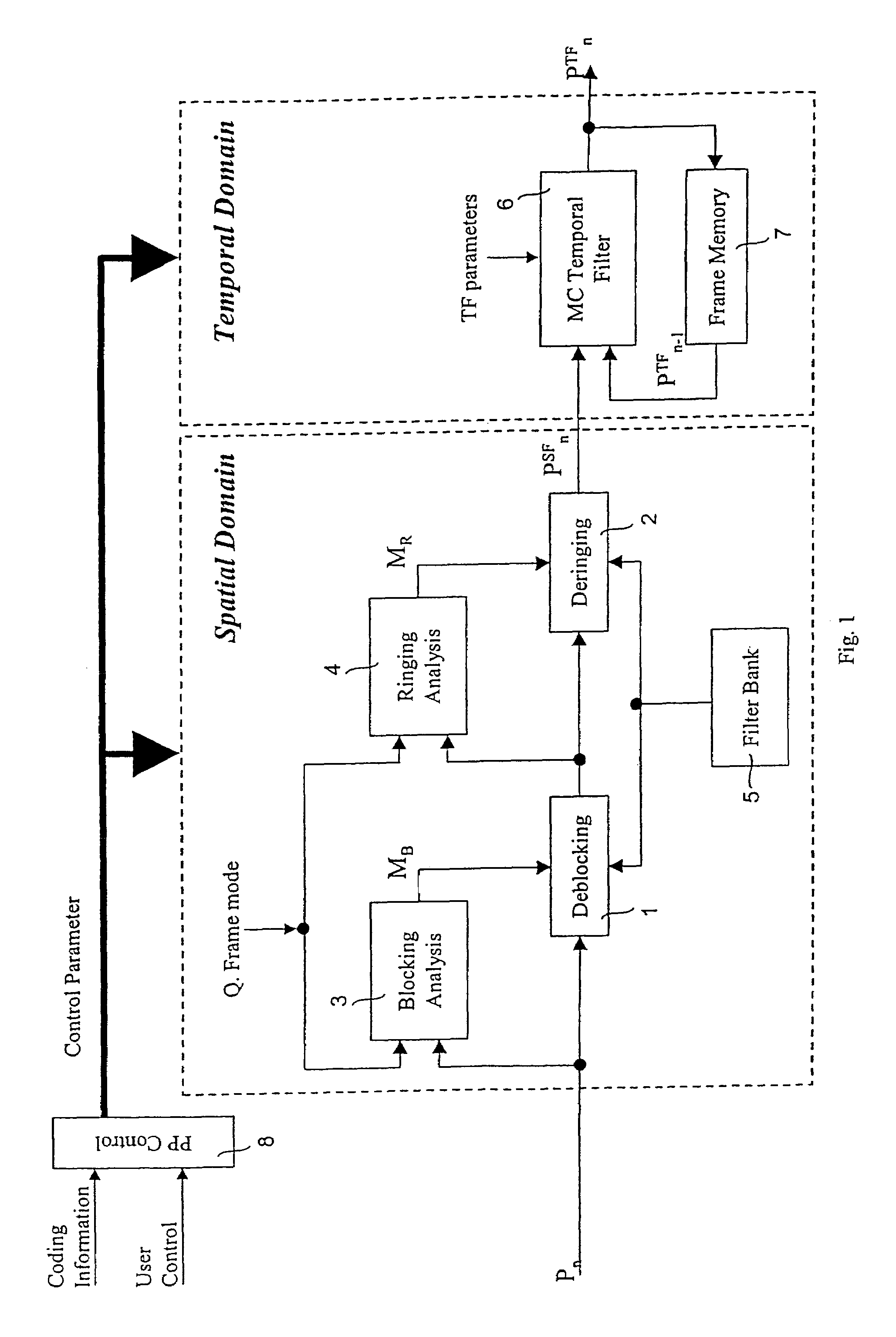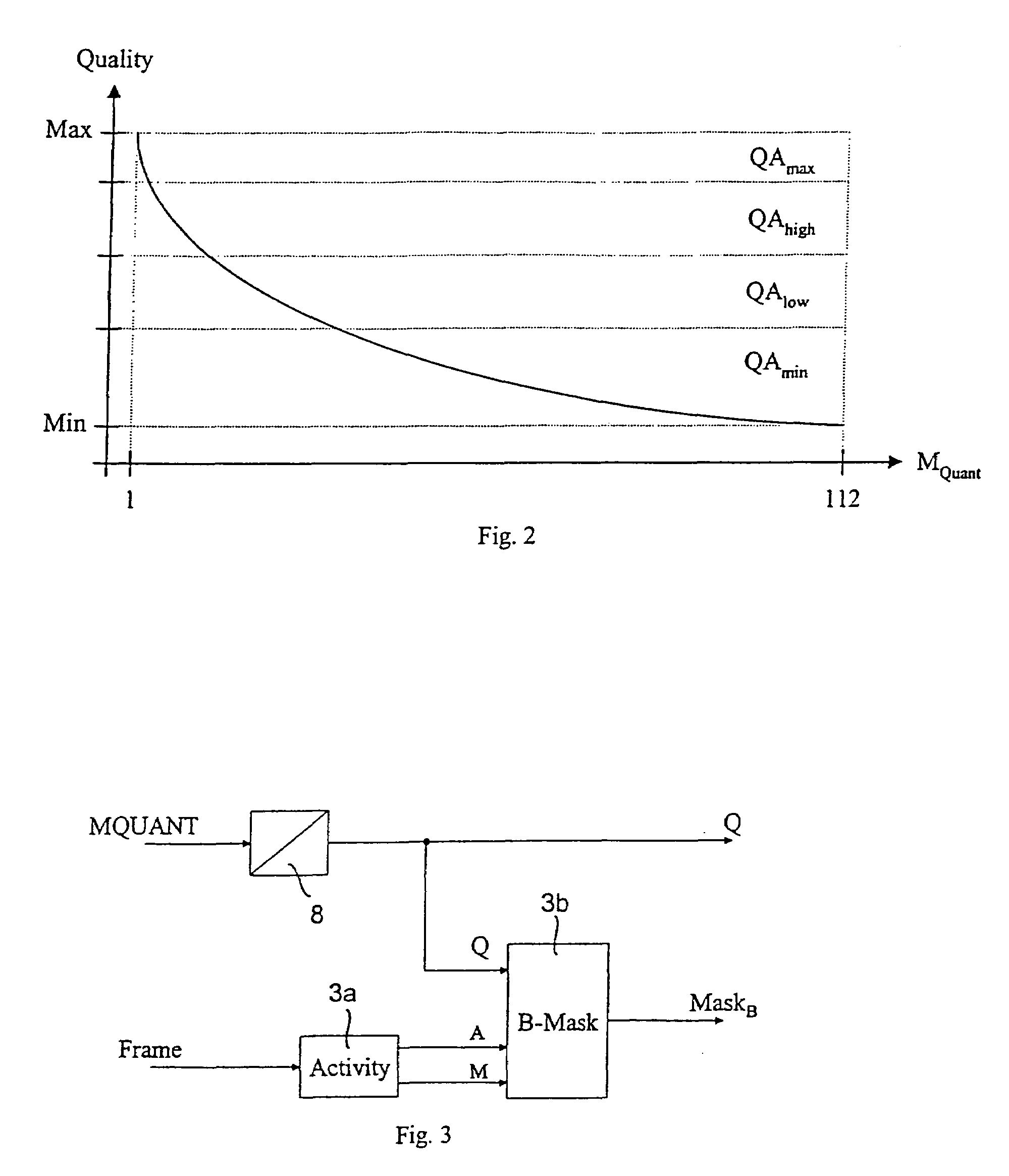Method of coding artifacts reduction
a technology of artifacts and coding, applied in the field of coding arefacts reduction, can solve the problems of only noticable image improvement, all the above described methods inherit the disadvantage of a relatively high needed calculation power, etc., and achieve the effect of minimizing the required filter operation
- Summary
- Abstract
- Description
- Claims
- Application Information
AI Technical Summary
Benefits of technology
Problems solved by technology
Method used
Image
Examples
Embodiment Construction
[0044]FIG. 1 shows a preferred embodiment of a system to reduce coding artefacts in conformity with the method to reduce coding artefacts within a discrete decoded picture according to the present invention. An incoming picture signal Pn first undergoes a deblocking filtering 1 with a following deringing filtering 2 in the spatial domain before it is filtered in the temporal domain by a motion compensation temporal filter 6 which outputs the coding artefacts reduced picture signal pTFn. The deblocking filter 1 and the deringing filter 2 have both access to a filter bank 5 to perform the respective necessary filter operations. To decide which parts of the picture will be subjected to the deblocking filtering 1 and the deringing filtering 2 a respective analysis is performed as described above. Therefore, a blocking analysis block 3 receives the incoming picture signal Pn to output a control signal MB for the deblocking filter 1 and a ringing analysis block 4 receives the output signa...
PUM
 Login to View More
Login to View More Abstract
Description
Claims
Application Information
 Login to View More
Login to View More - R&D
- Intellectual Property
- Life Sciences
- Materials
- Tech Scout
- Unparalleled Data Quality
- Higher Quality Content
- 60% Fewer Hallucinations
Browse by: Latest US Patents, China's latest patents, Technical Efficacy Thesaurus, Application Domain, Technology Topic, Popular Technical Reports.
© 2025 PatSnap. All rights reserved.Legal|Privacy policy|Modern Slavery Act Transparency Statement|Sitemap|About US| Contact US: help@patsnap.com



